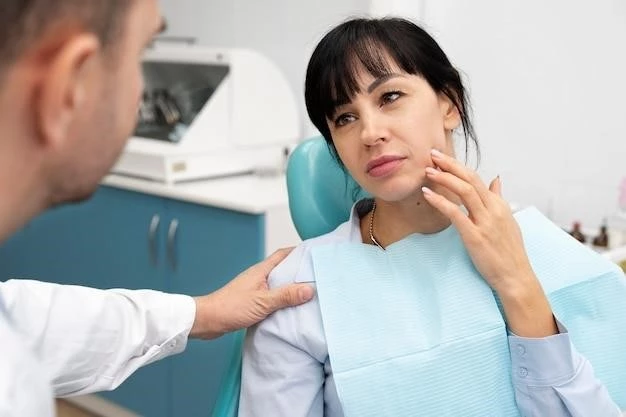Overview of CRMO Symptoms
Chronic Recurrent Multifocal Osteomyelitis (CRMO) often presents with bone pain, swelling, and warmth in affected areas. Patients may experience recurrent episodes of inflammation, leading to bone lesions and potential fractures. Systemic symptoms such as fever, fatigue, and malaise can also occur. Early diagnosis and treatment are crucial to managing CRMO effectively.

Symptoms of Chronic Recurrent Multifocal Osteomyelitis
Common Symptoms of CRMO
Common symptoms of Chronic Recurrent Multifocal Osteomyelitis (CRMO) include bone pain that worsens at night, joint swelling, and limited range of motion. Patients may also experience fatigue, fever, and overall discomfort. Skin redness and warmth over the affected areas can be observed. It is essential to monitor these symptoms and seek medical attention for proper management.
Medication-based Treatments
Medication-based treatments for Chronic Recurrent Multifocal Osteomyelitis (CRMO) may involve nonsteroidal anti-inflammatory drugs (NSAIDs), corticosteroids, disease-modifying antirheumatic drugs (DMARDs), and biologic agents. These medications aim to reduce inflammation, manage pain, and control disease activity. Treatment regimens are tailored to individual patients based on disease severity and response to therapy.
Treatment Options for CRMO
Physical Therapy and Rehabilitation
Physical therapy and rehabilitation play a crucial role in managing Chronic Recurrent Multifocal Osteomyelitis (CRMO). These interventions focus on improving mobility, strength, and function of affected joints and bones. Rehabilitation programs are tailored to each patient’s needs and may include exercises, manual therapy, and assistive devices. Working with skilled therapists can help enhance quality of life and promote long-term physical well-being.
Genetic Factors
Genetic factors play a significant role in the development of Chronic Recurrent Multifocal Osteomyelitis (CRMO). Variations in specific genes involved in the immune response and bone metabolism have been linked to an increased susceptibility to the condition. Understanding these genetic influences is essential for the early detection and personalized management of CRMO in affected individuals.
Causes of Chronic Recurrent Multifocal Osteomyelitis
Autoimmune Component
An autoimmune component is believed to contribute to Chronic Recurrent Multifocal Osteomyelitis (CRMO). In this condition, the immune system mistakenly attacks healthy bone tissue, leading to inflammation and bone lesions. Autoimmune processes play a role in the chronic nature of CRMO and the recurrent flare-ups experienced by patients. Understanding the autoimmune mechanisms involved is crucial for developing targeted therapies to manage the disease effectively.
Prevalence in Pediatric Population
Chronic Recurrent Multifocal Osteomyelitis (CRMO) is a rare condition that primarily affects children and adolescents. While the exact prevalence is not well-defined, CRMO is estimated to occur in 1-2 per million individuals per year, with a slightly higher incidence in females. Early recognition and appropriate management of CRMO in pediatric patients are essential to prevent long-term complications and ensure optimal outcomes.
CRMO in Children⁚ What You Need to Know
Impact on Growth and Development
Chronic Recurrent Multifocal Osteomyelitis (CRMO) can have a significant impact on the growth and development of children. The condition may cause skeletal abnormalities, bone deformities, and growth disturbances in affected areas. Timely diagnosis and appropriate treatment are crucial to minimize the impact of CRMO on a child’s overall growth trajectory. Multidisciplinary care involving pediatric specialists is often necessary to address these specific growth concerns.
Diagnostic Imaging Techniques
Diagnostic imaging techniques such as X-rays, MRI scans, CT scans, and bone scans play a crucial role in the diagnosis of Chronic Recurrent Multifocal Osteomyelitis (CRMO). These imaging modalities help visualize bone abnormalities, inflammation, and lesions characteristic of CRMO. Radiological findings, combined with clinical evaluation and laboratory tests, aid in accurate diagnosis and monitoring of disease progression in patients with CRMO.
Diagnosing Chronic Recurrent Multifocal Osteomyelitis
Laboratory Tests for CRMO
Laboratory tests for Chronic Recurrent Multifocal Osteomyelitis (CRMO) may include blood tests to assess inflammatory markers such as erythrocyte sedimentation rate (ESR) and C-reactive protein (CRP). Additionally, tests to rule out infections and autoimmune conditions are essential. Bone biopsies may be performed to confirm the diagnosis by analyzing the affected bone tissue. An integrated approach combining imaging and laboratory findings is crucial for the accurate diagnosis of CRMO.
Pain Management Strategies
Pain management strategies for Chronic Recurrent Multifocal Osteomyelitis (CRMO) may include the use of nonsteroidal anti-inflammatory drugs (NSAIDs), corticosteroids, and other analgesics to alleviate pain and reduce inflammation. Additionally, physical therapy, heat or ice therapy, and rest can help manage pain and improve quality of life for patients with CRMO. A multidisciplinary approach involving pain specialists and rheumatologists is often beneficial in developing individualized pain management plans.
Managing Pain in CRMO Patients
Psychological Support for Pain Coping
Psychological support is essential for helping Chronic Recurrent Multifocal Osteomyelitis (CRMO) patients cope with pain and the emotional impact of the condition. Counseling, cognitive-behavioral therapy, and relaxation techniques can be beneficial in addressing stress, anxiety, and depression associated with chronic pain. Encouraging a positive mindset and providing psychological resources can enhance overall well-being and resilience in individuals managing CRMO symptoms.
